
Every time you look up in the sky and see an airplane passing overhead, you can rest assured that that plane has a clear destination in mind. Taking into account the weather, the distance, and fuel requirements, each aircraft, no matter what type of aircraft, follows a perfectly demarcated trajectory. This has been the norm for air travel since the invention of the first flying machine, even if the journey was simply a quick circle in the skies around the area. However, on the rarest of occasions, the unexpected can occur, and despite the best efforts of those involved in planning, things can go wrong in ways we still cannot fathom.
As early as the 1850's, hot air balloons like Ville De Paris ascended to the sky and never returned. The Pathfinder hydrogen balloon soared across the airspace of Illinois, and while the body of the passenger was recovered, the pilot and the aircraft were never seen again. These are 10 different aircraft that disappeared under the most mysterious of circumstances in the 20th century.
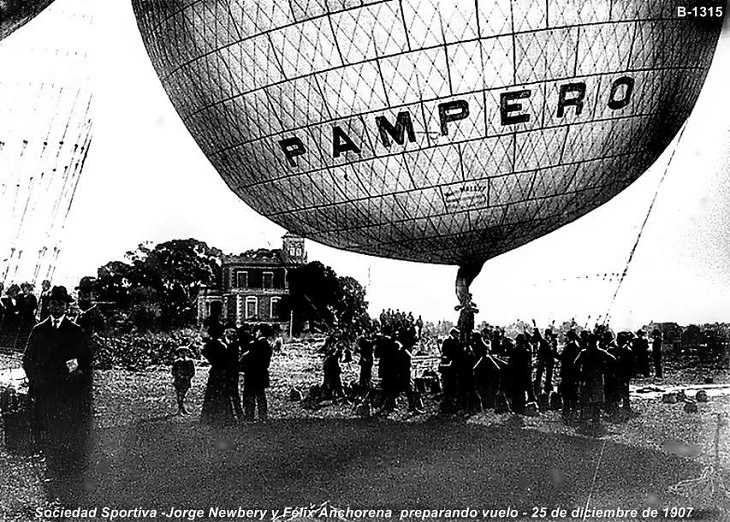
(Facebook)
Taking off for its final flight on 17th October 1908, the Pampero was piloted by Argentinian Eduardo Newbery along with a passenger who accepted a last-minute invitation on the aerostat, Argentine Army Corporal Eduardo Romero. The flight was commandeered with the goal of breaking the night-flying record. After moving northbound across the skies of Buenos Aires, neither the aircraft nor the passengers were seen again, making them the first Argentinians to pass away in an aircraft incident.
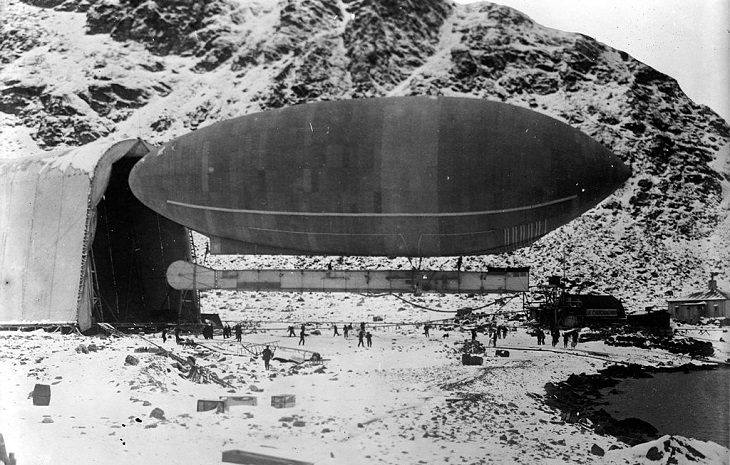
(By Bain News Service, Wikimedia Commons)
Taking off for its final flight on 18th October 1910, the America airship was built in France a few years prior for Walter Wellman, an American explorer, journalist, and aeronaut. He wanted to attempt an air journey to the North Pole. The ship made numerous successful flights prior to its 1910 departure from Atlantic City. A passing storm combined with engine failure caused by contamination from beach sand derailed their trip.
After nearly 70 hours of traveling and at approximately 1500 miles away from their launching point, the passengers of the America flagged down and boarded a passing steamship, abandoning the airship. The first aerial distress call was made on this airship by radio during this final flight.
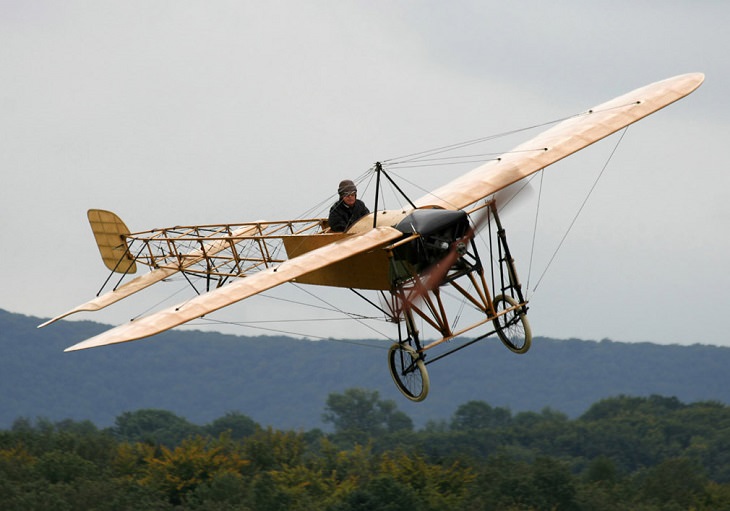
(By J.Klank, Wikimedia Commons)
Taking off for its final flight on 5th June 1911, this pioneer-era aircraft made in France, resembling modern airplanes, belong to 20th-century French aviator Édouard Jean Bague. The monoplane was created and purchased by Bague for his attempted journeys across the Mediterranean sea.
His first attempt was unsuccessful, ending with a forcible landing numerous stops short of the intended destination that damaged both the plane and the pilot. Bague made a second attempt in June of 1911. However, his flight disappeared shortly after its take-off from Nice. Despite numerous search efforts carried out by French naval vessels, neither pilot nor plane was found.
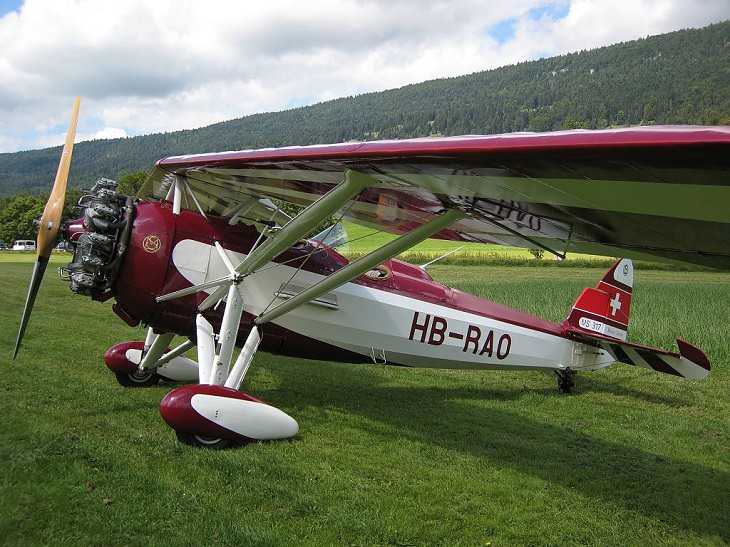
(By Geekfield, Wikimedia Commons)
Taking off for its final flight on the 23rd of May 1914, this monoplane designed and built by the French Aircraft manufacturer Aéroplanes Morane-Saulnier was in the hands of British aviation pioneer Gustav Wilhelm Hamel. On the above-mentioned date in 1914, while Hamel was returning from the Vélizy – Villacoublay Air Base in France in his newly purchased monoplane, all set to compete in the Aerial Derby later that day, the aircraft disappeared in the air space above the English Channel.
A little over a month later, a body was discovered by the crew of a fishing vessel in a certain portion of the Channel, believed strongly but never officially confirmed to be the corpse of Hamel. There was much speculation following his disappearance regarding sabotage, but as the aircraft was never found, all such theories soon faded away.
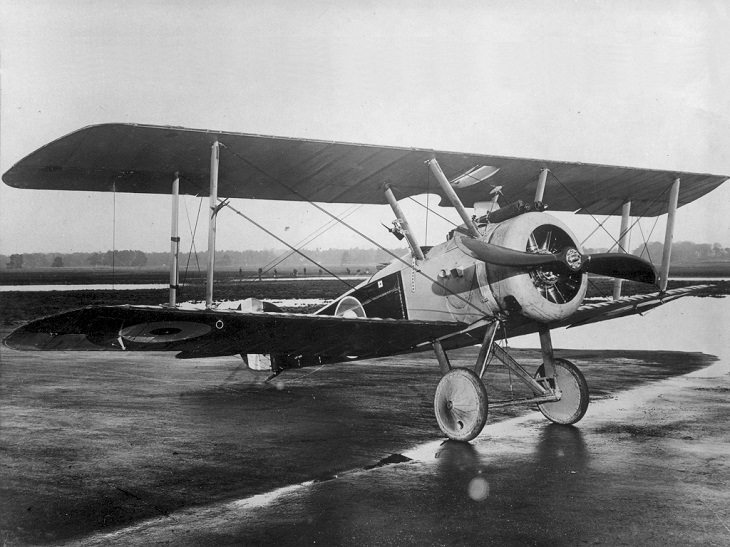
(By unknown RAF photographer, Wikimedia Commons)
Taking off for its final flight on June 2nd, 1919, the plane that disappeared was reportedly the first Sopwith Camel in the United States and was flown for the first time by a Canadian born World-War I flying ace, named Mansell Richard James. Competing for a cash prize being offered by a local newspaper, James was attempting the fastest journey from Atlantic City, New Jersey to Boston, Massachusetts.
On May 28th, 1919, James took off and mapped his route by following the railway tracks to Boston. However, it is assumed that he followed the wrong tracks, as James stopped to service his aircraft in Tyringham, Massachusetts. It was then on June 2nd that James again took flight, reportedly turning south and then west, in the complete opposite direction of Boston, according to the huge crowds that had gathered to watch the spectacle that was the early days of air travel.
Neither James nor the aircraft was ever seen again. Immediately after his disappearance, and repeatedly over the next few years, search attempts were carried out. Any aircraft wreckage found was examined in brief, but no positive identification was made on any of the debris found.
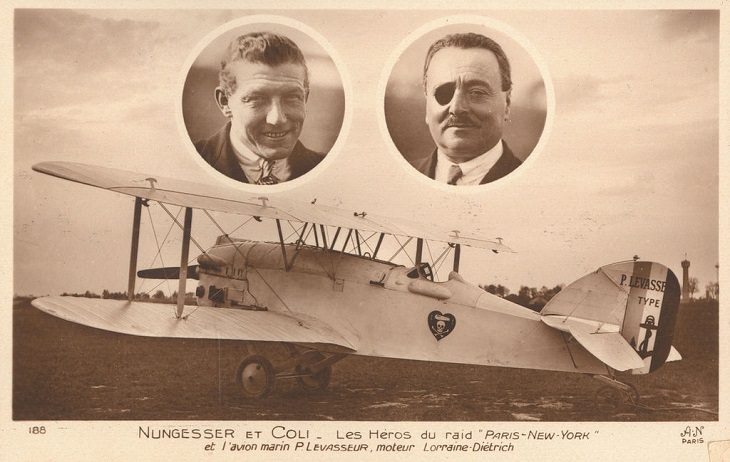
(By Unknown author, Wikimedia Commons)
Taking off for its final flight on 8th May 1927, the L'Oiseau Blanc (French for the White Bird) was a French-made biplane Levasseur PL.8, a record-breaking long-distance single-engine two-seater aircraft. On the date in question, the White Bird was piloted by adventurer Charles Nungesser and navigator François Coli, in an attempt to compete for the Orteig Prize awarded for the first non-stop transatlantic flight from Paris to New York City.
The biplane successfully departed from Paris and was spotted as far as above Carrigaholt, a small fishing village in Ireland. Rumors circulated that the aircraft was next seen above Long Island air space. A huge crowd of ten thousand people and more gathered in Battery Park, in Manhattan, New York City, to get a view of the aircraft soaring past the Statue of Liberty. Reports even spread in France that the flight had landed safely.
However, after time continued to pass and it was understood that the flight would have run out of fuel by that point, it became clear that the flight had been lost. Neither the aircraft nor its pilots were found and this disappearance still remains to this day one of the greatest mysteries in aviation history.
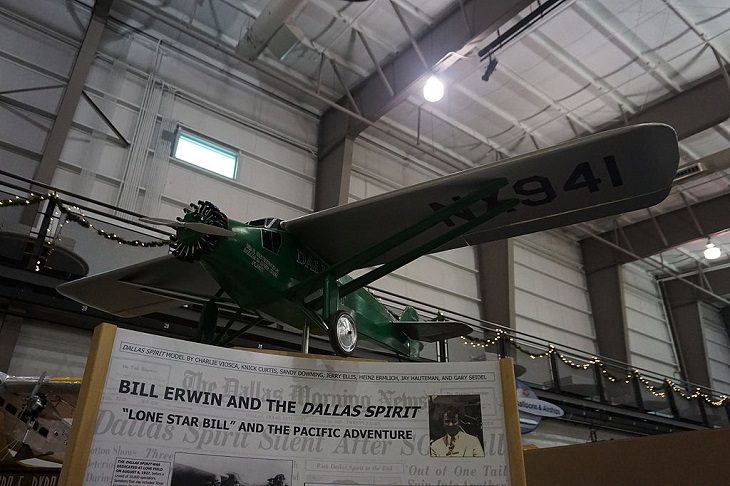
(By Michael Barera, Wikimedia Commons)
Taking off for its final flight on August 19th, 1927, the Dallas Spirit, also known by the names Swallow Monoplane or Swallow Dole Racer, was a plane custom built by the Swallow Airline Company, designed specifically for competing in the Dole Air Derby, one of the deadliest air races, with a path from California to Hawaii. The race ended in disaster with 2 planes crashing in the first leg of the race, 2 planes disappearing, and only 2 making it to Hawaii.
The Dallas Spirit suffered some damages, but after repairs were completed, the pilot, William Portwood Erwin, decided to attempt the trip again, regardless of the prize money, to search out the two missing planes. The repairs to the plane also included the addition of a radio, so when the aircraft went into a spin, Erwin managed to send a message and then an SOS before the signal was abruptly lost, and the plane was never seen again.
Bits of wreckage washed up on shore after, believed to belong to the Dallas Spirit, but the same was not confirmed. Swallow Airline Company was consequently put out of business as a result as the Dallas Spirit had been built on credit, with the promise a portion of the Dole Air Derby Prize Money to be granted to them in return. This repayment never came to fruition following the loss of both the Derby and the pilot and aircraft.